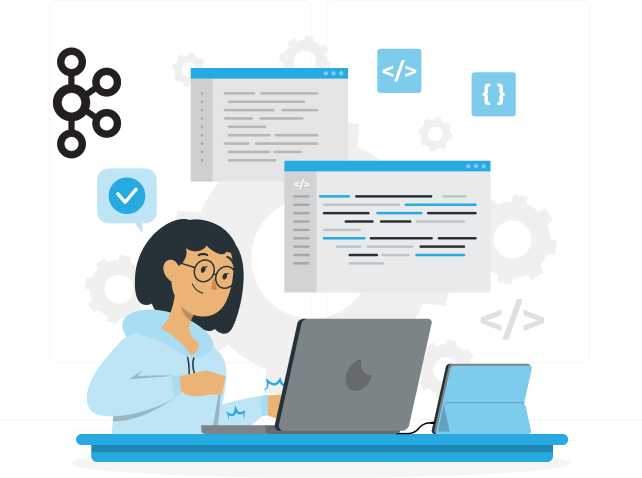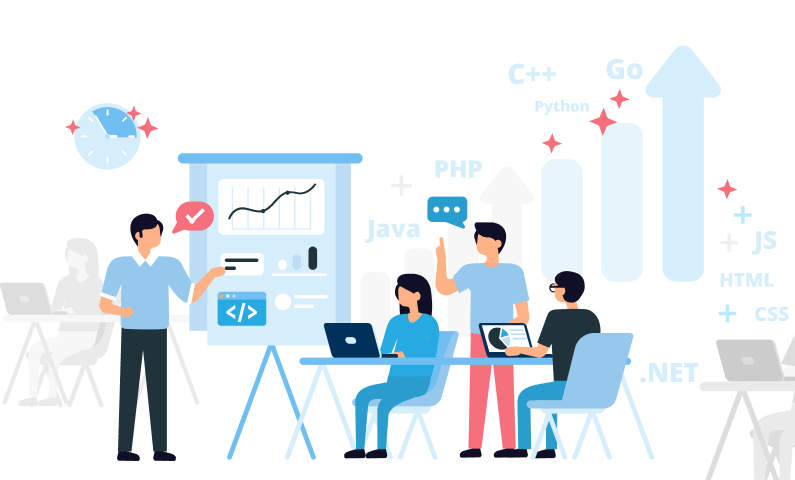In a world in which the retail landscape is only becoming more competitive, businesses must advance on the path of technological innovations to provide more impressive experiences and attract sales. Some of the most thrilling innovations in this domain are iBeacons.
This solution, employing BLE (Bluetooth Low Energy), creates a micro-location environment, thus allowing retailers to reach in real-time and personalize each shopper’s experience. In the blog, we shall discuss what iBeacon technology is, various retail applications of it, and how it can be used to transform customer interactions while driving revenue.
What is iBeacon Technology?
iBeacon is a communication protocol between small wireless sensors named beacons and Apple, which can effortlessly allow the device to exchange messages. Such beacons can easily be seen by other smart phones nearby, possessing the technology of Bluetooth, in the near vicinity, because it starts emitting some signal, thus receiving these signals when a phone goes in the range of it and thus will be able to do various actions at certain moments when a person installs a retail app.
It blends the online and offline shop buying experiences and makes hyper contextual information accessible to its customers as they walk down retail spaces. Engaging personal relationships with a customer upgrade shopping experiences and establish brand loyalty.
How does iBeacon work?
At its core, iBeacon technology relies on BLE, which allows beacons to send signals at set intervals without using up much battery power. Here is how it typically works:
Beacon Installation:
Retailers install beacons throughout their physical stores, usually placed near products or high-traffic areas.
Signal Emission:
Each beacon sends a unique identifier signal at set intervals.
Device Detection:
The smartphone will discover the signal if a customer is approaching an iBeacon and if Bluetooth is activated with an app installed.
Action Triggering:
Such an app can then take action by pushing adverts, promotions, or relevant details of products based on his location in the store.
Data Collection:
The retailer can collect data about the interactions between customers and beacons and analyze shopping behavior and preferences.
What is an iBeacon Tracker?
An iBeacon tracker is a set of system monitoring and analyzing the interactions of the customers with beacons in retail environments. It tracks the customer engagement with beacons, thus enabling retailers to gather crucial information on shopping behavior, preferences, and movement patterns inside a store. The collected information could be used for optimizing store designs, enhancing marketing strategies, and great customer experiences.
Real-World Applications of iBeacon Technology in Retail
The applications of iBeacon technology in retail are immense and numerous. The most prominent use cases of these technologies are as follows:
1. Personalized Promotions
This is one of the most potent uses of iBeacons in retail: bringing highly targeted promotions direct to customers’ smartphones. For instance, when a customer approaches any aisle where the product is available, the iBeacon can send him or her notifications about current discounts or related products. Macy’s Shopkick app has successfully implemented this strategy by giving users offers tailored based on their shopping habits and location.
2. Improved Navigation within the Store
Customers may get lost within a big shopping floor. Using micro-location iBeacons, retailers can deliver turn-by-turn navigation and maps through their apps on the smartphone. For example, this facility is integrated into Target’s app, and customers can use it to locate particular products quickly and easily while enjoying a better shopping experience.
Example:
Target’s app utilizes iBeacons to help the customer navigate through the store based on his shopping list. In case a customer has laundry detergent, the app will take him to the same aisle where it is found, making shopping easier.
3. Loyalty Programs
Applications in iBeacons also touch on loyalty programs, and retailers can reward their customers either for visiting the store or when they make purchases. Starbucks makes use of iBeacons so that when a member walks into the store, it recognizes them and reclaims the rewards automatically as per previous purchases, together with offers that can be redeemed using the app.
Example:
When a customer who owns a Starbucks loyalty card enters a store with iBeacons, they are notified that all the purchases made during that particular day accrue double points. This hails in a lot of repeat traffic and also sale volumes.
4. Inventory Management
Beacon in retail enables companies to track movement of products and hence inform the retailers on which products are in demand and which need restocking. For example, Walmart has used beacon technology in some of its stores to track inventories in real-time. It informs popular items, as no customer runs out of them.
Example:
If a product sells recurrently but is low in stock, the system will notify the employees that such a product needs to be ordered before it runs out so that customers can be served and the lost sale opportunity is not lost.
Through analyzing the data collected by iBeacons, one can gain knowledge about the behavior patterns of customers. For example, it shows that which time of the day customers most visit and areas in the store. Such information can be used to make refined marketing strategies and enhance the layout of stores.
For example, Neiman Marcus has already used this approach by installing beacons in its store to track customer movement and afterward tailoring the marketing strategy according to their movement tracked.
The Neiman Marcus company found through beacon analytics that some of the regions within their departmental store were highly crowded but had very low conversion rates. They could repose products and promotion displays there in a more strategic manner so as to increase sales in those regions.
Successful Case Studies of iBeacon Implementation
Macy’s
Macy’s is among the first users of the iBeacon technology, which it integrates as part of retail strategy in reaching its customers. Beacons that the shops will put in all the shops ensure that they have offered customized reminders about offers and happenings in a specific section of the shop to their customers.
The tactic has increased foot traffic as well as conversion rates due to how well informed customers have been about their needs at any given time.
Outcome
Macy’s found out that the customers, who had received the message using iBeacons, had increased chances of buying as compared to those who did not receive the message.
Ted Baker
The British luxury clothing retailer Ted Baker installed iBeacon technology in its Westfield White City shop at London. It was done by placing beacons next to mannequins around the store so that on coming close to a shopper, they push out all sorts of product information with special offers directly on smartphones. These result in enhanced purchase behavior from a shopper visiting the store.
Outcome
Given these engagement rates, Ted Baker experienced increases in sales conversion rates during sales events due to consumers who received notifications of relevant products.
Target
Target was able to integrate micro-location iBeacons with its app to navigate customers better within the stores. Customers will receive real-time guidance about where to find specific items searched for and are kept informed about promotions occurring in several parts of the departments.
Outcome:
Scores of customer satisfaction because of navigation features done through the utilization of iBeacons increased foot traffic, and average transaction values at Target retail outlets.
Source: A3Logics
Advantages of Using the iBeacon Technology
Enhanced Customer Interaction:
If there is relevant content being sent to in-store shoppers’ devices, they will be more engaged with that particular retailer.
Increased Conversion Rate:
Proximity-based promoted offers can help increase sales when a customer is more likely to make an impulse purchase over relevant offers.
Smoothening the Customer Experience:
In-store navigation and rich product information available in-store to customers makes shopping easier.
Data-Driven Insights:
More and more analytics that the retailers gain regarding customer behavior through beacon interactions enable informed decisions.
Enhancing Loyalty Programs:
Personalized rewards based on customer interactions create brand loyalty and repeat business.
Cost-Effective Marketing:
Through the capability of iBeacons to target accurately, retailers eliminate wasted marketing spends as they focus only on people who have an interest.
Inventory Management:
Beacons follow inventory in real-time to ensure popular items are never out of stock.
Smooth Omnichannel Experience:
Through integration of online data with the offline through iBeacons, retailers offer an omnichannel experience seamlessly to the consumers.
Increased Staff Productivity:
With the knowledge of the foot traffic patterns that the beacon analytics provides, the staff can be positioned better at the peak times.
Competitive Advantage:
Early adopters of innovative technologies like iBeacons have an edge over their competitors, who are yet to adapt to such innovations.
Conclusion
In a highly digital world, adaptive retail will continue to evolve more and more. Helping it take wing will be the understanding and deployment of iBeacon technology. With the integration of this progressive solution, businesses will be able to deliver a highly contextualized shopping experience that bridges the divide between online and offline environments.
If you are looking to get started with iBeacon technology, we are here to help! Let’s speak!

Start a Project with Ajackus











































































